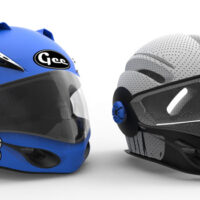While watching the tweets from SEU 2012, Mark Burhop tweeted from a seminar on 3D Printing, “All this new #3Dprinting technology needs designs – “Great day to be a CAD person!” #seu12. But is it?
In Part I of this series I talked about an interesting progression over the past 20 years. Remixing photos, audio and video have been directly related to the ease in which these forms of media can be edited and exchanged. CAD software like TinkerCAD or AutoCAD 123D are making it easier for anyone to edit, and Thingiverse and GrabCAD make it easier for people to exchange.
Core CAD users could benefit massively from this progression, but they can easily be squeezed out. The benefits are derived from having skills to produce quality work quickly. We have Shapeways and Sculpteo for the more artistic designer and GrabCAD Challenges for the mechanical designer. And then of course, there are those companies that want to be ready to leverage 3D printing to the max. However, there is a catch. The ease of exchanging CAD files means that great work can be stolen and profited from.
How many Bits of a Byte do I Own?
I’ll give you an example. Ulrich Schwanitz , creator of the Scrappies released a 3D printable Penrose Triangle, a beautiful optical illusion that screams “WHAT?” and “WANT!” at the same time. Many were curious of how he accomplished that feat–Ulrich wouldn’t reveal how. That is, until designer Artur Tchoukanov, the Origo 3D Printer Developer, revealed his own version and documented how to do it, free for anyone to use. Ulrich sent a DMCA demand to Thingiverse, only to recind it after a week of acrimonious debate with users.
It’s a delicious irony that the opening battle over 3D printing and patent infringement was over the ownership of an optical illusion. The conundrum is simple – patent protection comes from open documentation. Yet that open documentation of your work leaves the designer vulnerable to counterfeit. Until very recently, it was difficult to copy, manufacture and profit off a design. That implied a factories and economies of scale. With a 3D printer and the Internet, that barrier is gone. The natural protections offered to the inventor, at least for simpler products, is gone. At the same breath, it’s easier for designers and engineers to make their own products, or remix and improve others.
More to come in Part III!
Sources: iMaterialise has a great piece on the whole debate. Props to BoingBoing‘s take as well.








